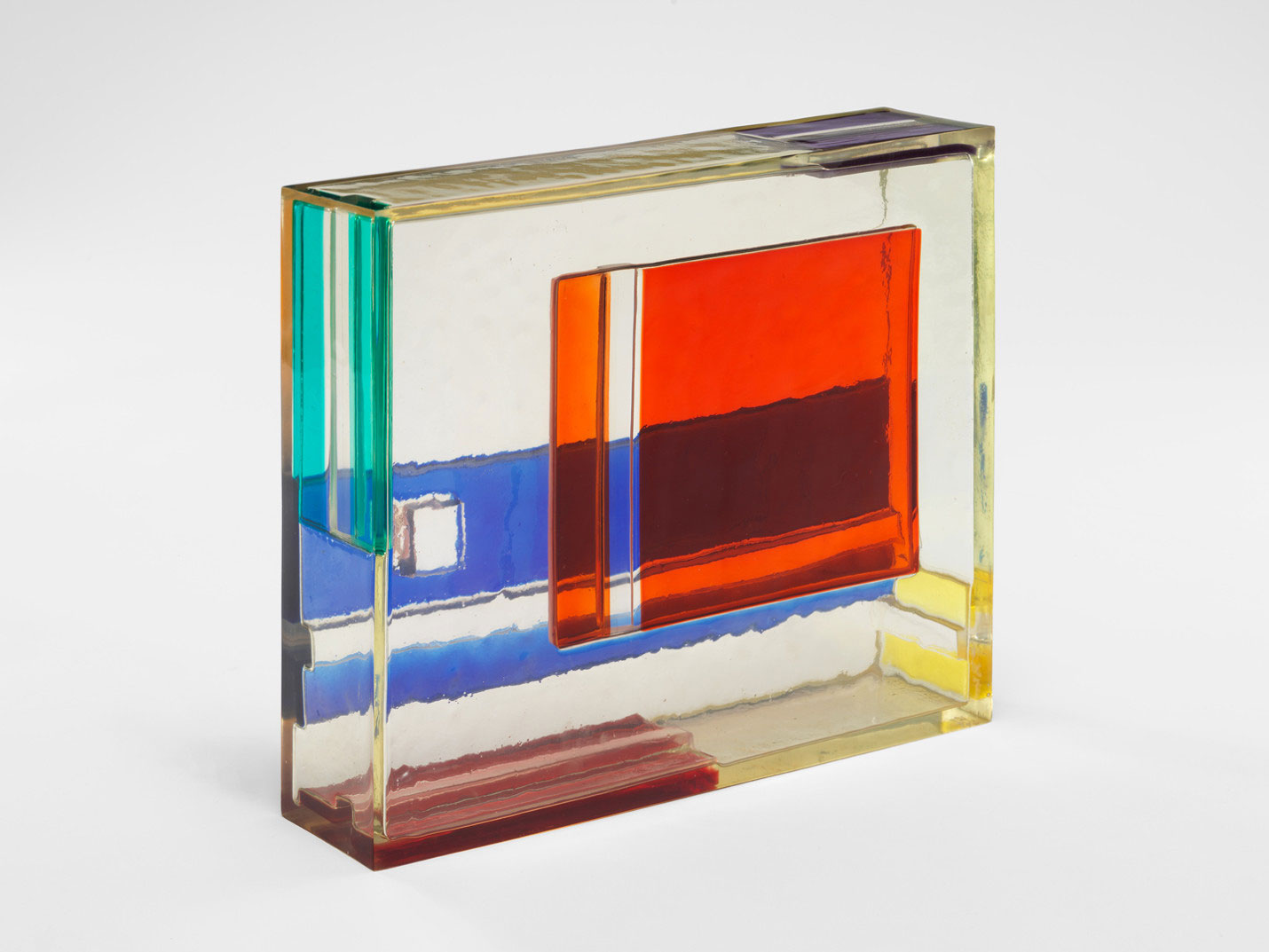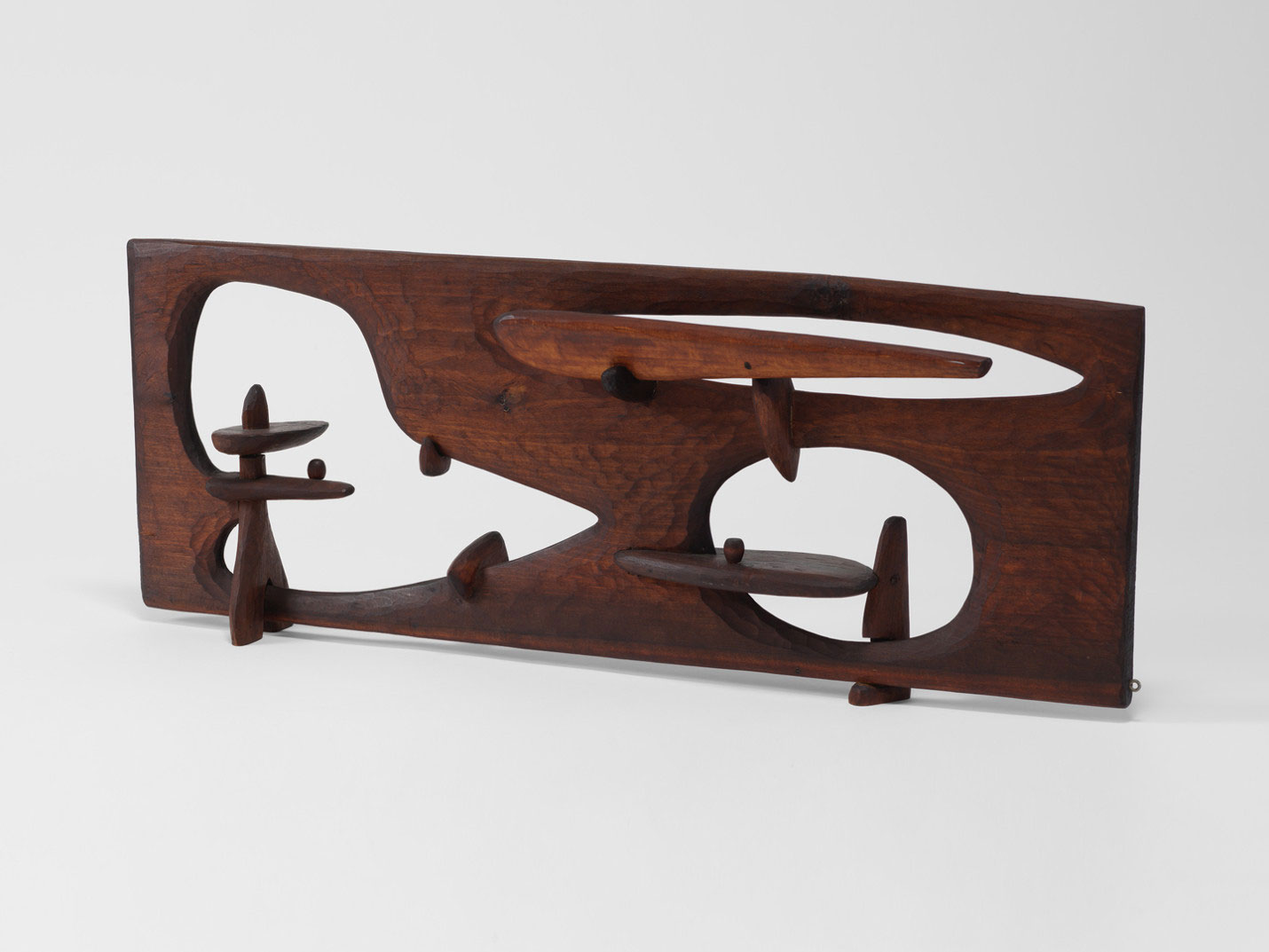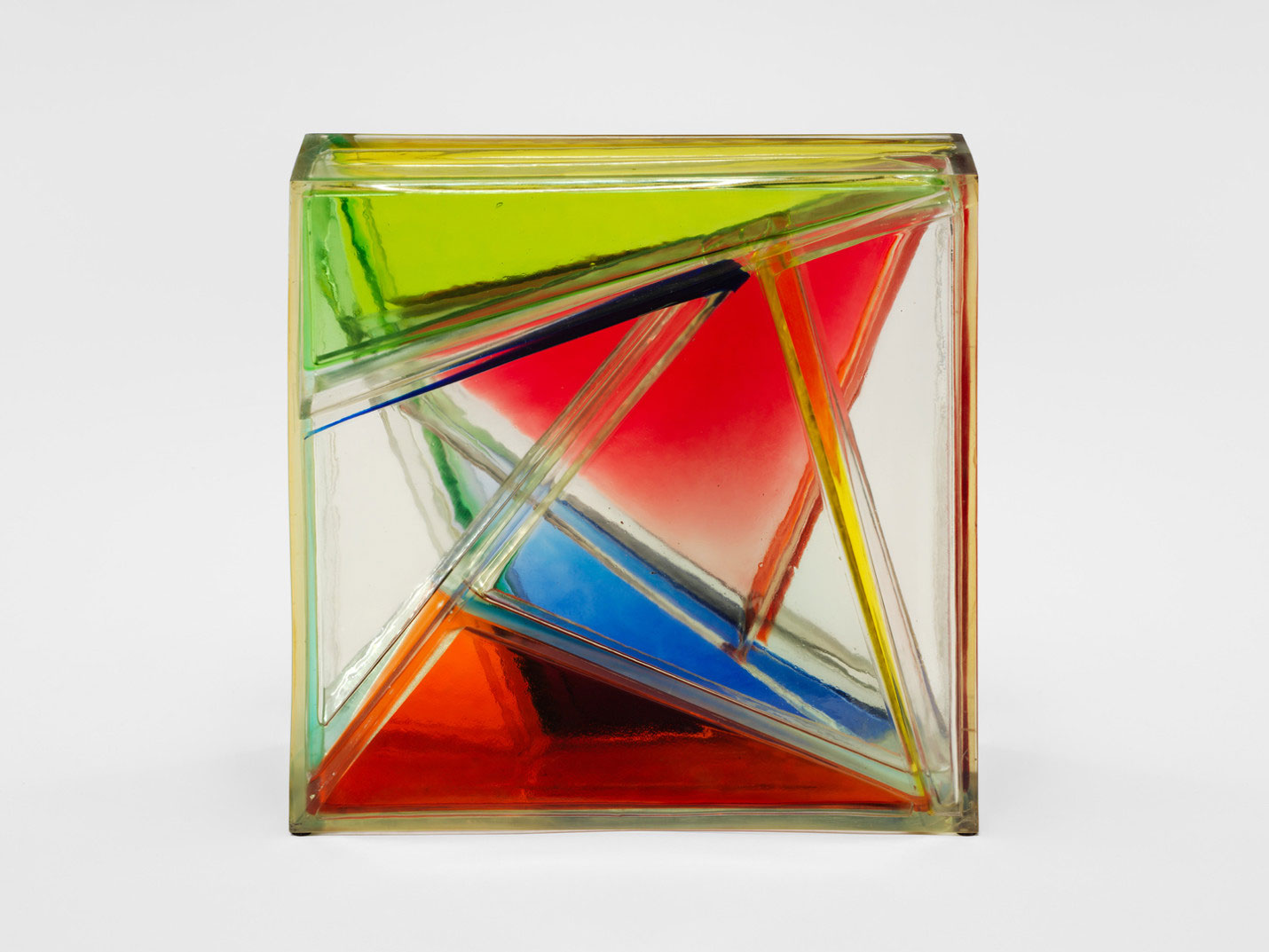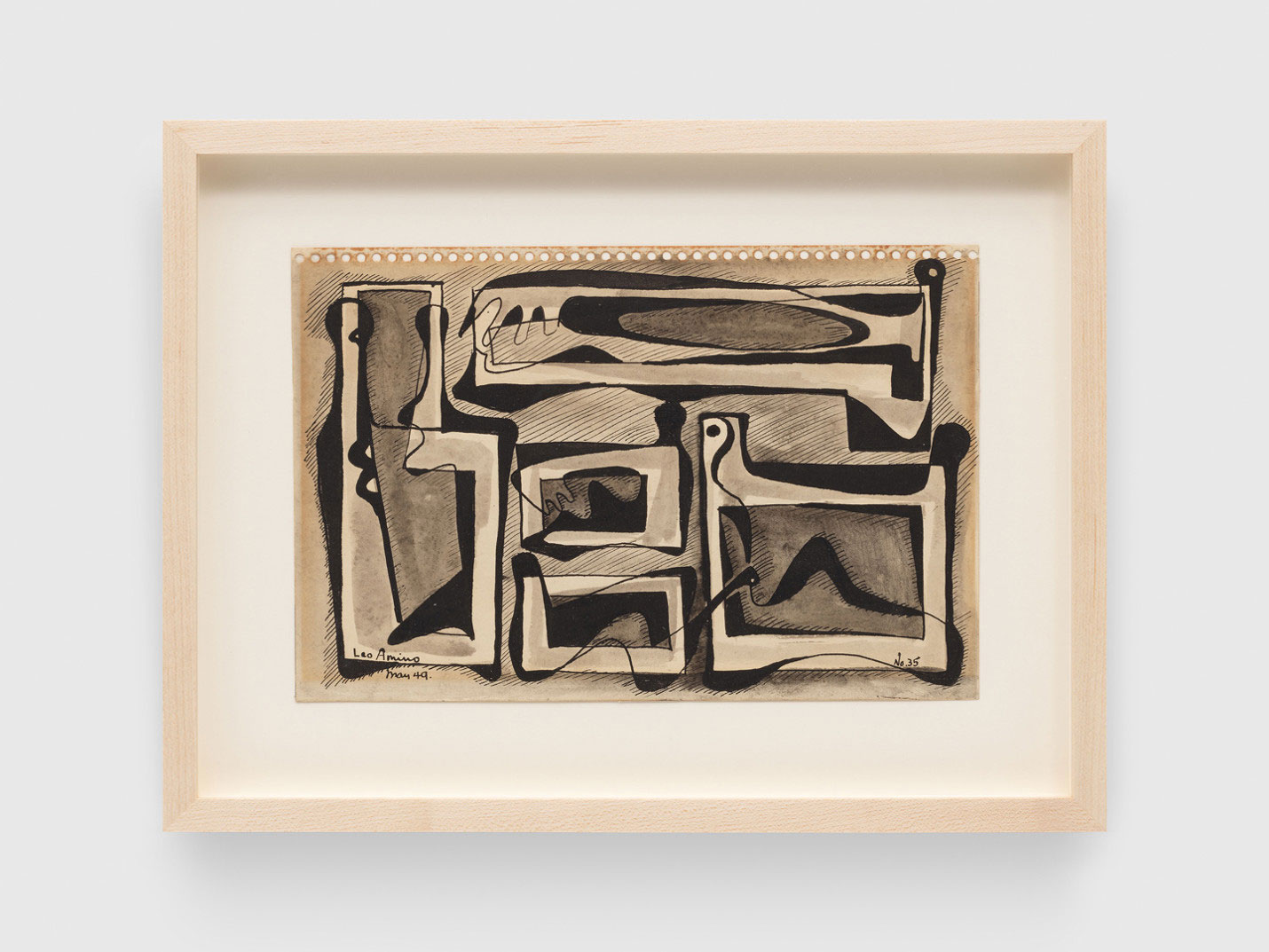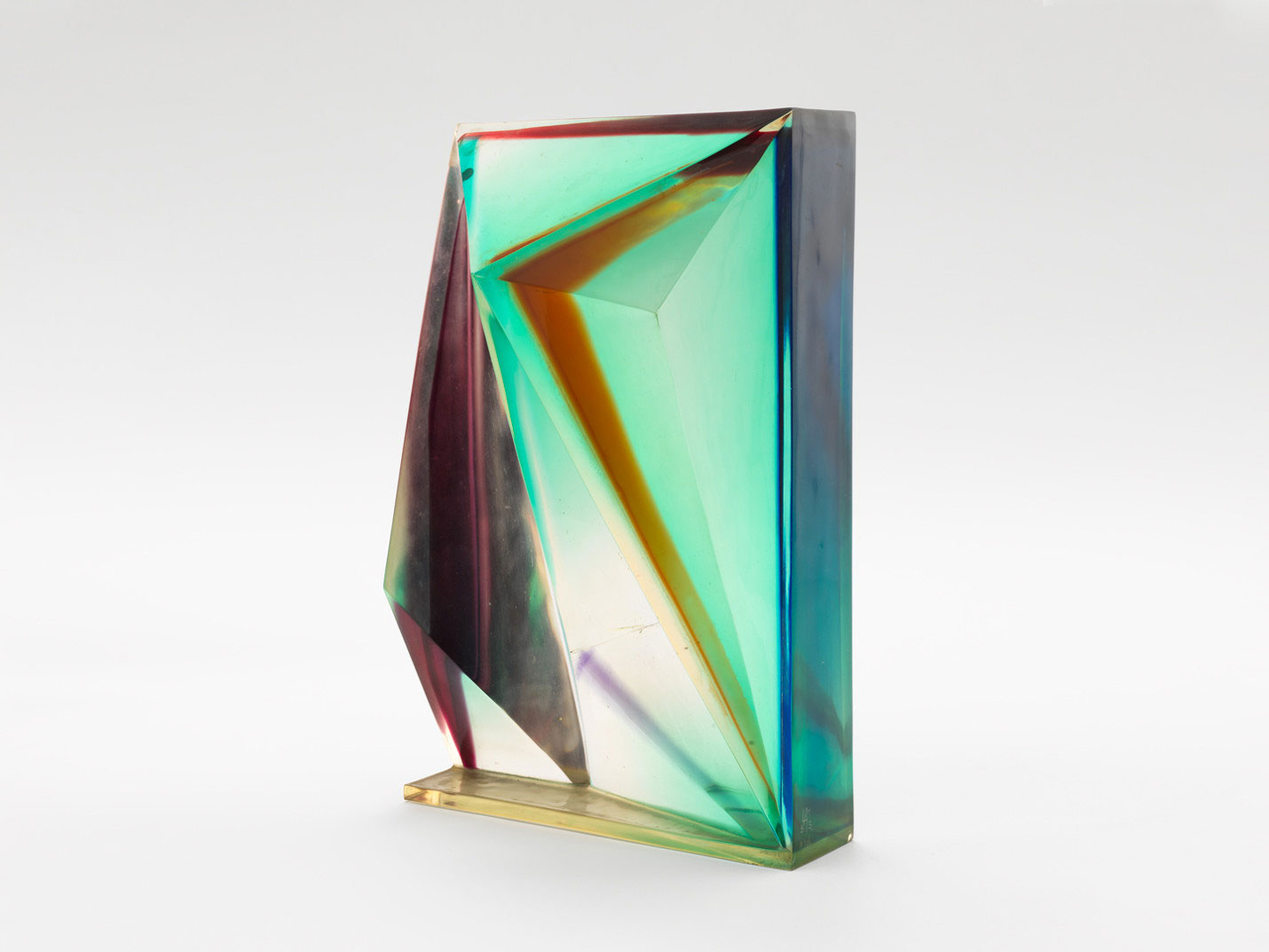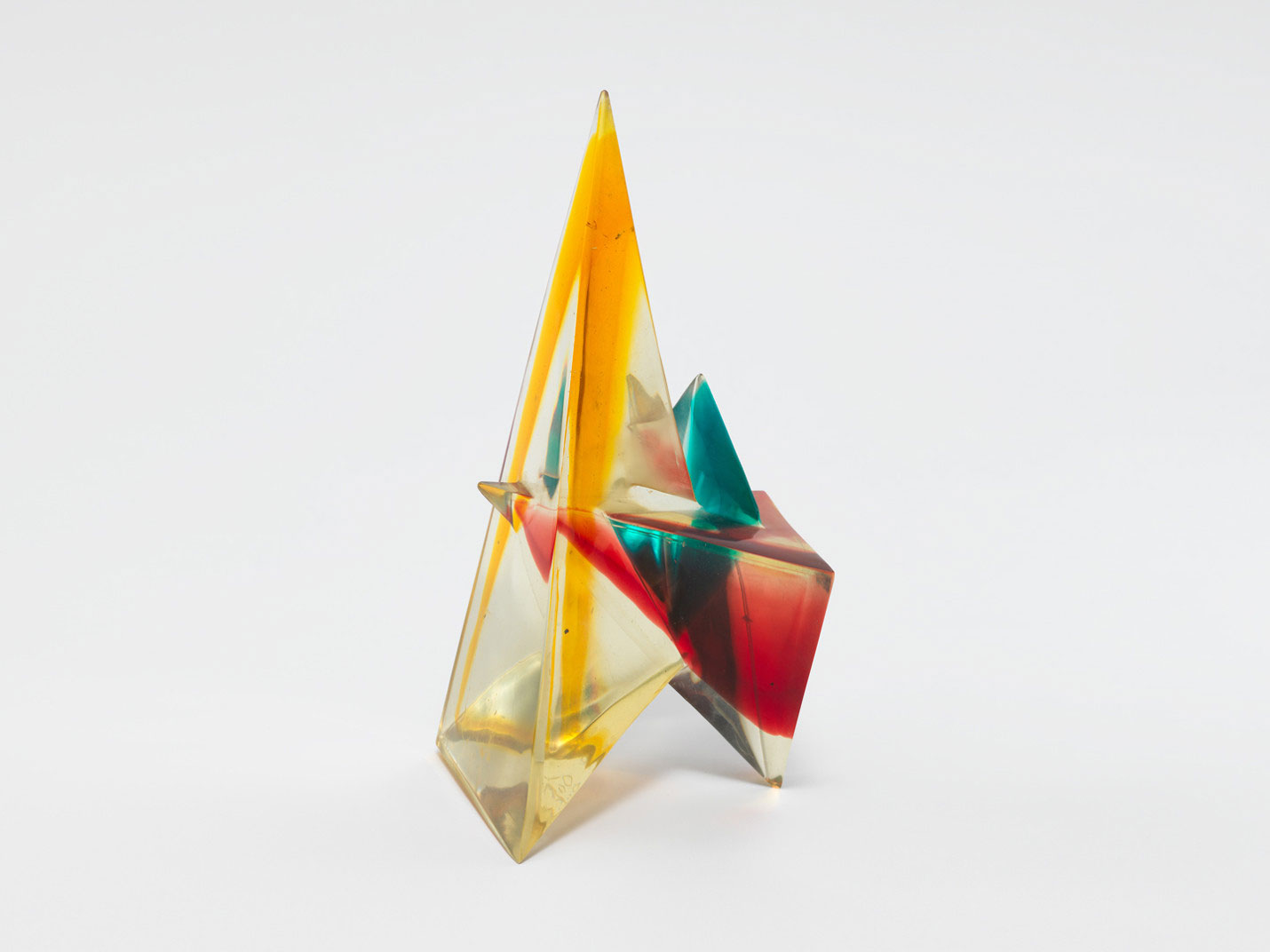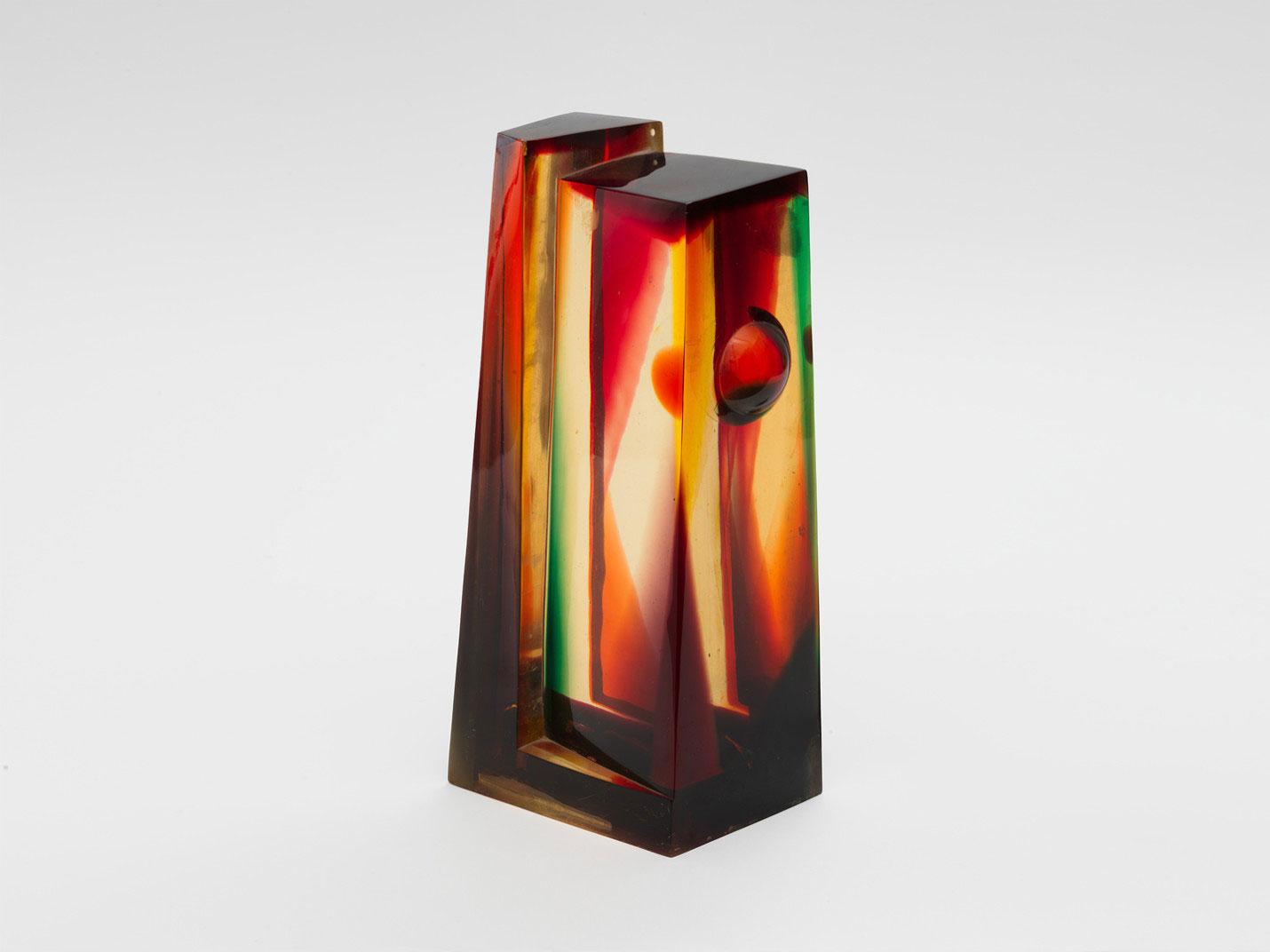ART-PRESENTATION:Leo Amino-The Visible And The Invisible
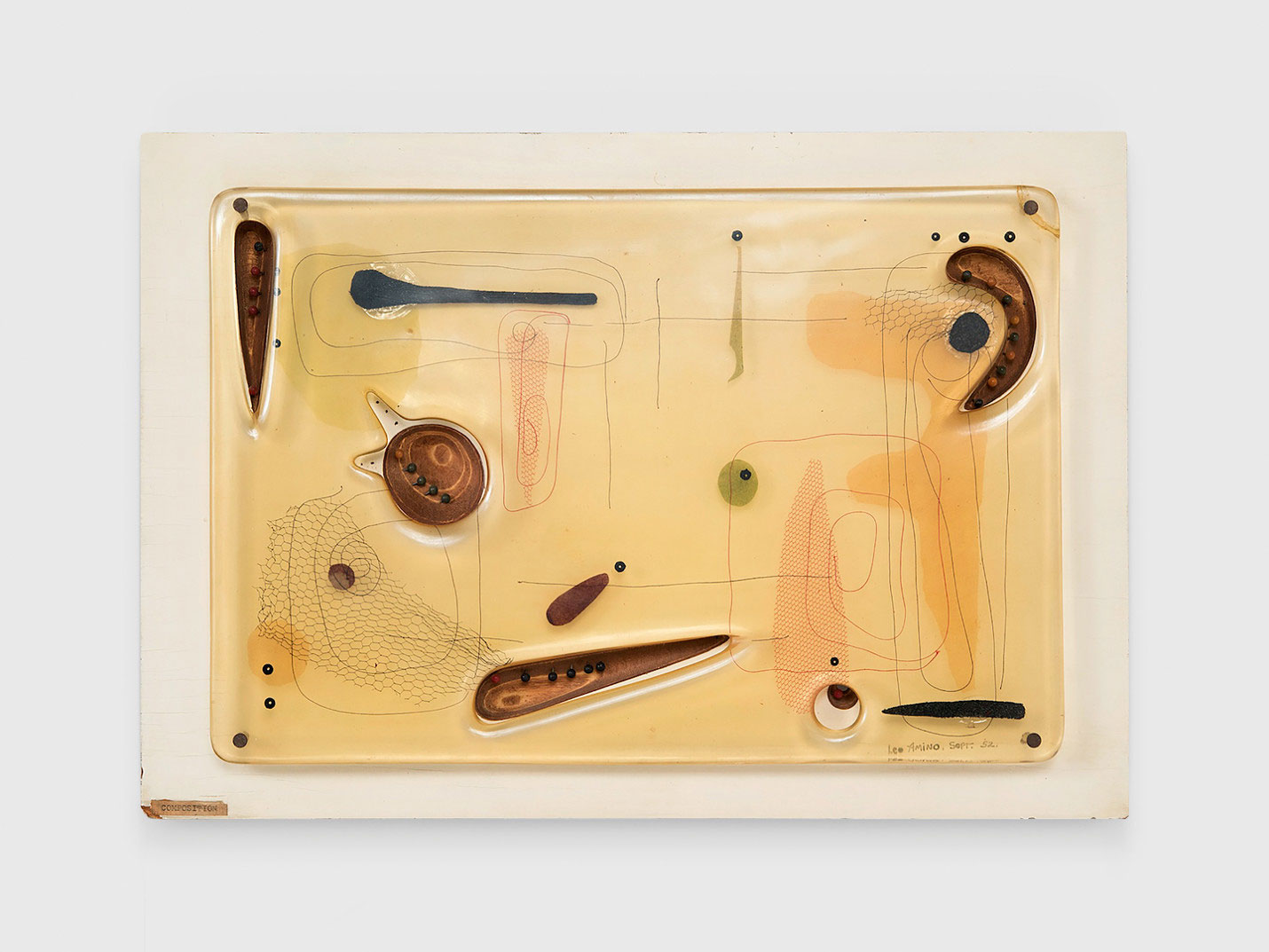 Leo Amino is the first artist in the United States to use plastics as a principal medium for experiment. He is responsible for the innovation of cast plastics in the history of modern sculpture. Inspired in part by the Plexiglas experiments of the Russian Constructivists as well as Bauhaus sensibilities, his embrace of light and color as primary elements of sculptural construction anticipated the work of avant-garde American artists in the 1960s, some of whom had been his students.
Leo Amino is the first artist in the United States to use plastics as a principal medium for experiment. He is responsible for the innovation of cast plastics in the history of modern sculpture. Inspired in part by the Plexiglas experiments of the Russian Constructivists as well as Bauhaus sensibilities, his embrace of light and color as primary elements of sculptural construction anticipated the work of avant-garde American artists in the 1960s, some of whom had been his students.
By Dimitris Lempesis
Photo: David Zwirner Gallery Archive
The exhibition “The Visible and the Invisible” features a range of Leo Amino’s work from the 1940s to the 1980s, including previously unseen sculptures and works on paper from the artist’s estate. Born in Taiwan under the auspices of Japanese colonial rule and educated in Tokyo, Amino immigrated to the United States as a young man in 1929. During the second Sino-Japanese and World Wars, Amino became disillusioned with both Japanese and American nationalist traditions, seeing the provincialism and conformity they encouraged as anathema to the spirit of modernity. Amino shared a resolutely anti-conformist and anti-traditionalist philosophy with the exiles and refugees of the Bauhaus. Like fellow experimentalists of his generation Josef Albers and Ad Reinhardt, Amino was initially recognized by the cooperative Artists’s Gallery, where he received his first solo exhibition in 1940. After several one-man shows in New York, Amino was invited by Albers to join the faculty of Black Mountain College in the summer of 1946, two years after the college’s integration, where he taught alongside the Albserses, Jacob Lawrence, and Walter Gropius, and informed the education of students Ruth Asawa, Kenneth Noland, and Harry Seidler, among others. The college’s experimental approach to media, embodied in Anni Albers’s notion of “work with material” spoke to Amino’s vision for a modern sculpture in which aesthetic and technical experiments were inseparable. He is one of three faculty of color to teach at Black Mountain during the history of the Summer Arts Sessions. The first artist in the United States to utilize plastics as a principal material, Amino pioneered this medium more than two decades before its widespread use by other American artists, making him the successor to the Plexiglas experimentations of Bauhaus and constructivist artists Naum Gabo and László Moholy-Nagy. The artist’s experiments emerged from dissatisfaction with his attempts to incorporate color into traditional sculptural media, anticipating the concerns of minimalist artists that would not gain widespread attention until the 1960s. Amino dedicated the second half of his career exclusively to these ideas, producing a series of “refractional” compositions with light, color, and transparency. His innovative practice is increasingly recognized alongside that of Japanese American artists Asawa and Isamu Noguchi as contributing to the establishment of a unique subset modern sculpture. Taking its title from phenomenologist Maurice Merleau-Ponty’s eponymous 1964 book “The Visible and the Invisible” features work from throughout Amino’s career, including sculptures made in synthetic resin, acrylic, wood, and wire. The works illustrate how Amino investigated transparency and the dynamics of perception, articulating space, light, and color through geometric and biomorphic sculptural form. The selection of “refractionals” on view speak to Amino’s unorthodox minimalism, which he understood not in terms of aesthetic polemic but in relation to his readings in phenomenologyIn 1969 Vito Acconci described the uncanny experience of looking through Amino’s sculptures: “The over-all form looks solid, holding the viewer away from it, while the inside is elusive and tempts the viewer in. Seen from one direction, there is an agglomeration of color, while, seen from another, the color almost disappears; the viewer enters it unconsciously”.
Info: Curator: Genji Amino, David Zwirner Gallery, 537 West 20th Street, New York, Duration: 6-31/7/20, Days & Hours: by appointment only, www.davidzwirner.com
